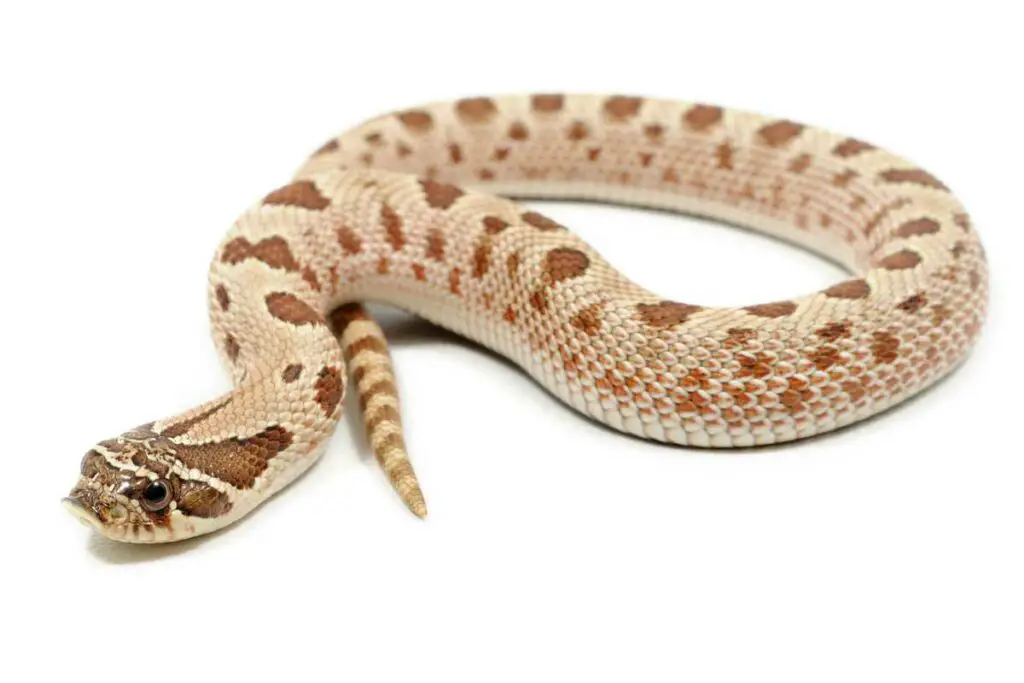So, do groundhogs climb trees?
As a matter of fact, not only are groundhogs capable of climbing trees, they’re quite good at it. Typically, a groundhog will climb a tree to reach some tempting fruit, or to avoid a predator!
Table of Contents
Groundhogs About
Did you know, groundhogs are closely related to squirrels?
They are chunky, muscular little marmots. They also hibernate for up to 5 months, being one of the true hibernating animals.
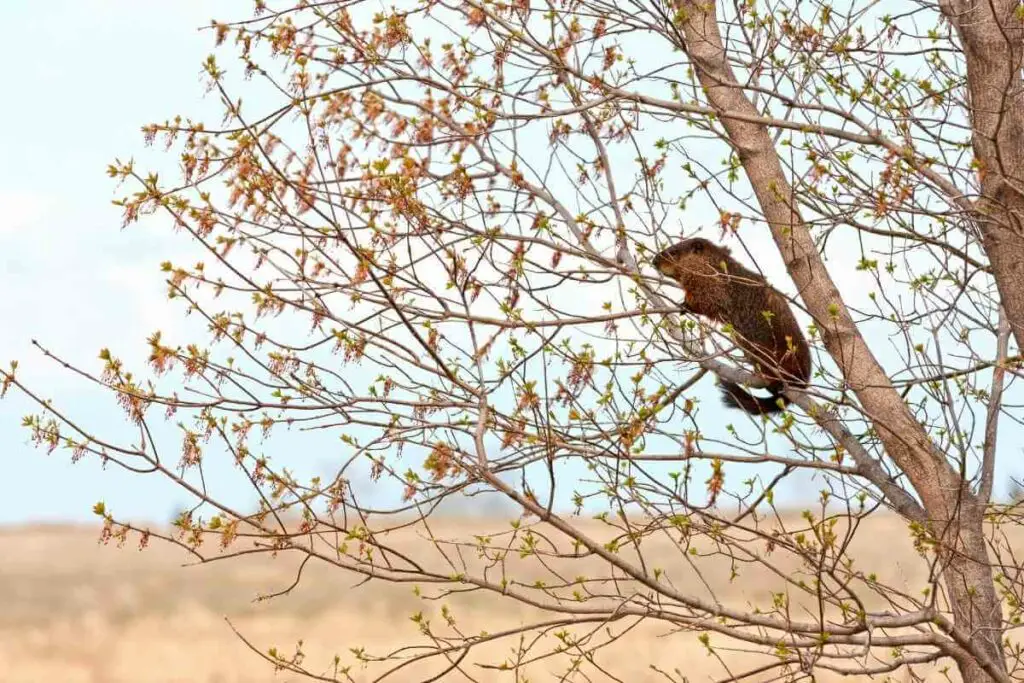
They are widespread across the US, and they eat up to 1 pound at a time as they prepare to hibernate.
This is a process they undergo all summer. Once they hibernate, they are very plump, and they’ve grown thick winter fur!
Do Groundhogs Climb Trees?
Groundhogs can indeed climb trees. This, despite their bulky, heavy bodies. They use their claws to get a good grip.
Why do groundhogs climb trees?
A tree is a perfect escape in the face of a predator. It takes the groundhog well out of reach.
Trees also potentially hold leaves and fruit for them to pick!
What Is a Groundhog’s Favorite Food?
If you are wondering what’s bringing a groundhog to your yard, it could easily be your garden.
Gardens hold several of groundhog’s favorite foods.
This includes:
- lettuce
- peas
- beans
- alfalfa
- and clover
They also consider certain flowers to be highly edible, including marigolds, pansies, sunflowers, daisies, lilies, etc.
If you have any of these plants in your garden and live around groundhogs, you might need to make your garden groundhog-proof.
How?
There are a few methods.
First off, you can scare them off. Groundhogs are quite timid, so this shouldn’t be too difficult to do.
Works Well: Just find garden ornaments like pinwheels, things that spin or make noise, or are colorful. Often, this will do the trick!
Can Groundhogs Swim?
Another surprising capacity of the bulky, ungraceful groundhog is its ability to swim.
The groundhog is a good climber and a good swimmer!
Are Groundhogs Bad For Trees?
So, what if you find a groundhog in one of your trees?
Are groundhogs bad for trees?
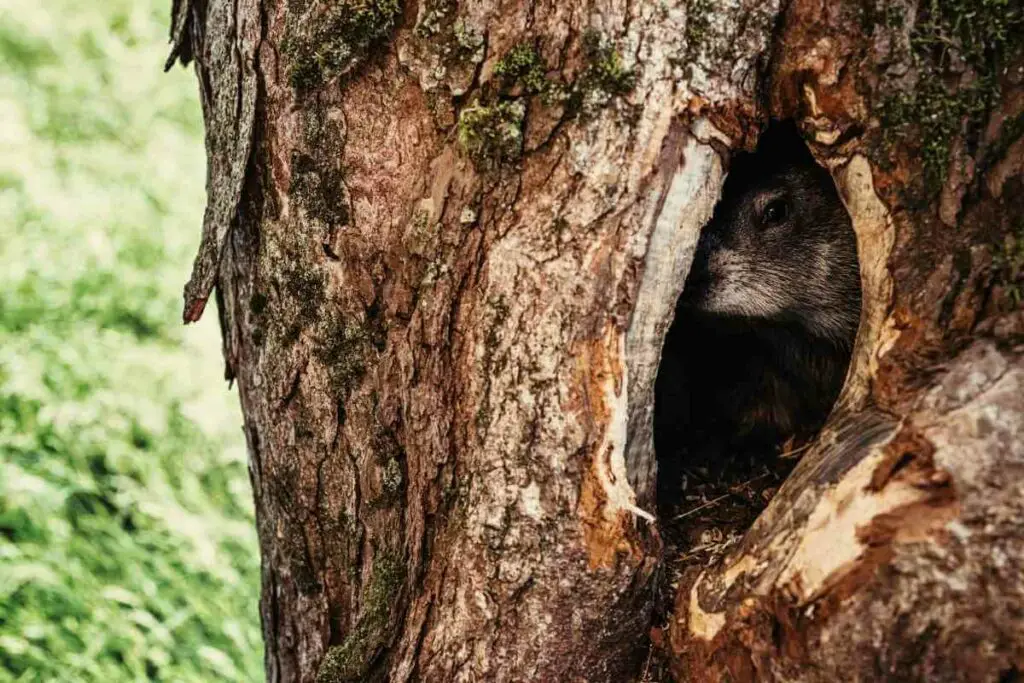
Directly, groundhogs don’t do much harm to trees. They climb trees occasionally, to hide or to procure a snack!
This being said, groundhogs also create up to 5-foot-tall underground burrows. These can absolutely interfere with root systems (not to mention manmade structures).
If you think that your groundhog visitors might be doing more harm than good, there are a few steps that you can take to get them out.
Take a look!
Scare Them Off
As touched on above, perhaps the simplest way to deter groundhogs is to scare them off.
This can be done with lawn decorations, such as spinning pinwheels, fans, etc.
Bright colors can also deter!
Fence Them Out
If scaring the groundhogs off doesn’t work, you may need to go a couple of steps further and make a fence to keep them out.
This should be comprised of both chicken wire and wood posts, with the chicken wire measuring at least 6 feet.
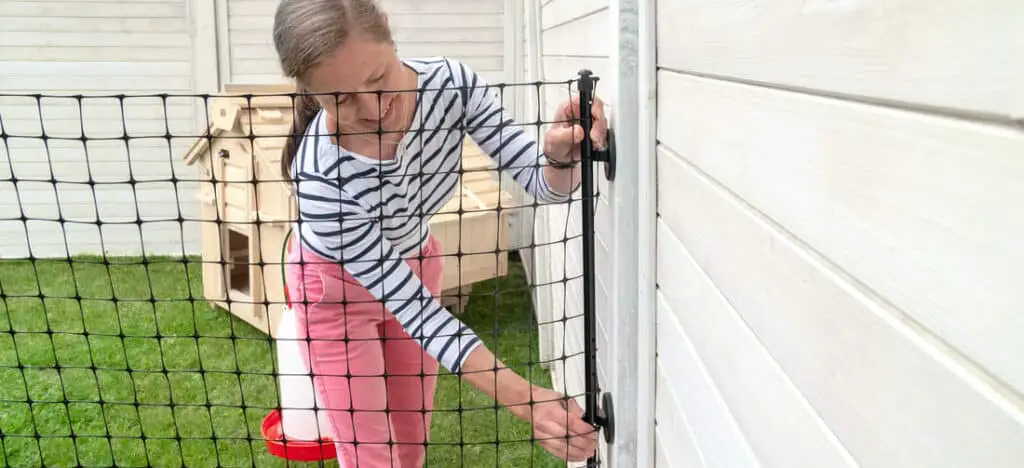
For the wood posts, 5-feet-tall should do the trick!
Just make sure that the fence is buried a few feet underground so that the groundhogs don’t simply climb under it.
Also, to prevent them from climbing the fence, make sure to bend the fence inwards and curl the top out. This will make climbing it much more difficult (hopefully, impossible).
Did You Know? Groundhogs are so good at burrow-making that foxes and other animals use them when they’re empty? Sometimes, an animal can even find sanctuary in a burrow that’s being used for hibernation – what luck!
Relocate
So, perhaps you’ve tried scaring the groundhogs off.
Perhaps you’ve tried to fence them out, but they’re just too skillful (this does happen, sometimes, as burrowing is their specialty).
This means that it’s probably time to relocate the little guys. This, assuming that they are proving a nuisance.
Some people enjoy having groundhogs visit – it really just comes down to what you prefer!
Anyway, you can relocate the groundhogs yourself.
All that you’ll need is a humane grab-trap, purchased online, and it will nab up the groundhog(s) before they have a chance to burrow or snack!
What Are the Benefits of Having a Groundhog In Your Yard?
So, you’re one of the few who wants groundhogs in your yard.
They are very cute, chunky critters, and it can be fun to watch them come and snack.
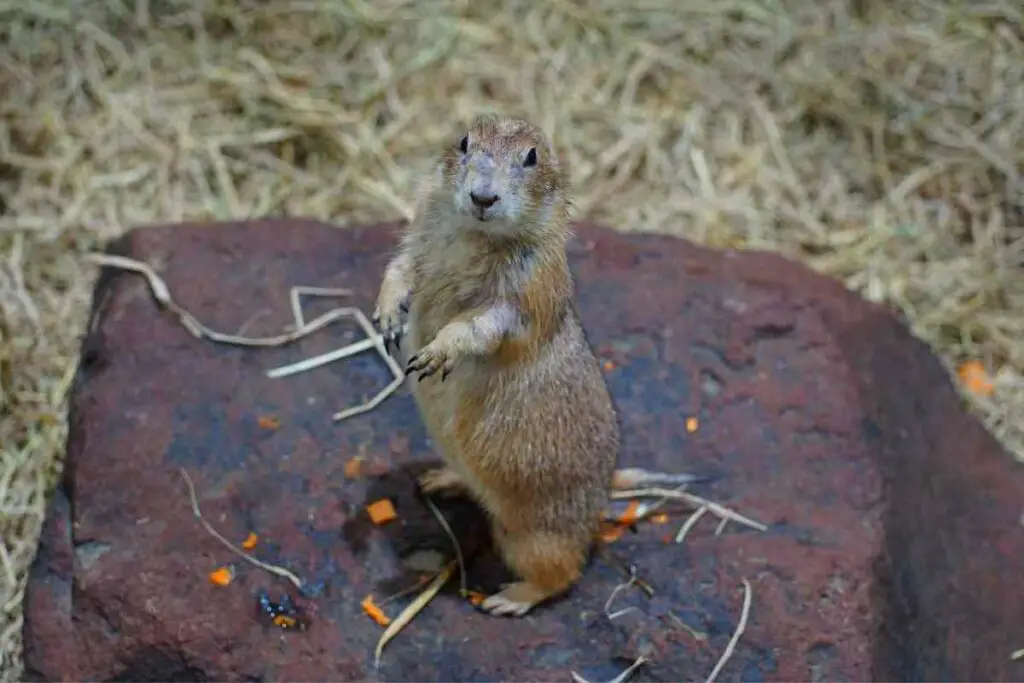
Perhaps, you could even fence off part of your garden and then have a patch for your groundhog friends to visit.
They are not picky and will eat the leaves and fruit of nearly anything. For this reason, they are usually considered to be a nuisance.
But, some love them, anyway.
Along With This: Groundhogs do offer one positive when it comes to visiting your yard: they aerate the grass naturally. Their speedy, skillful burrowing really does the trick!
Final Thoughts
So, if you were wondering, ‘Do Groundhogs Climb Trees?’ now you know!
Groundhogs do, indeed, climb trees.
In fact, they are skillful little guys, and can not only climb, but also swim, and of course, burrow! They climb trees to reach tasty fruits and to escape predators.
Along with this, they eat many of the plants (squash, daisies, etc.) to be edible.
Fortunately, if you consider groundhogs in your garden a pest, there are some handy ways you can keep them in check!




